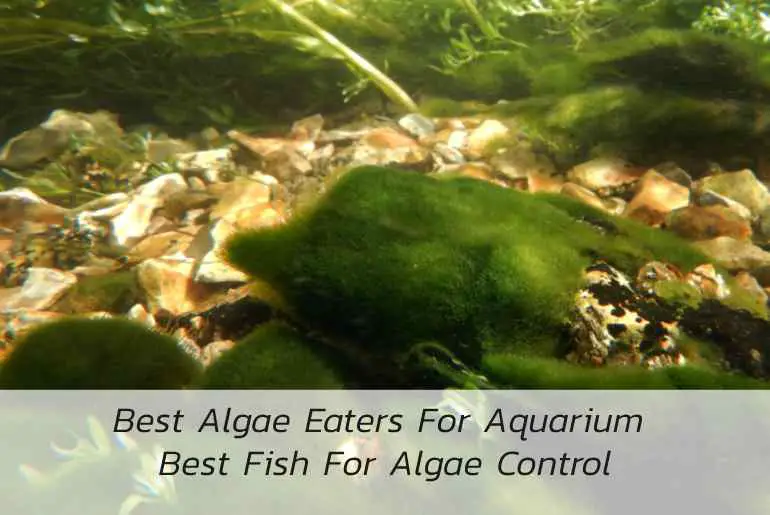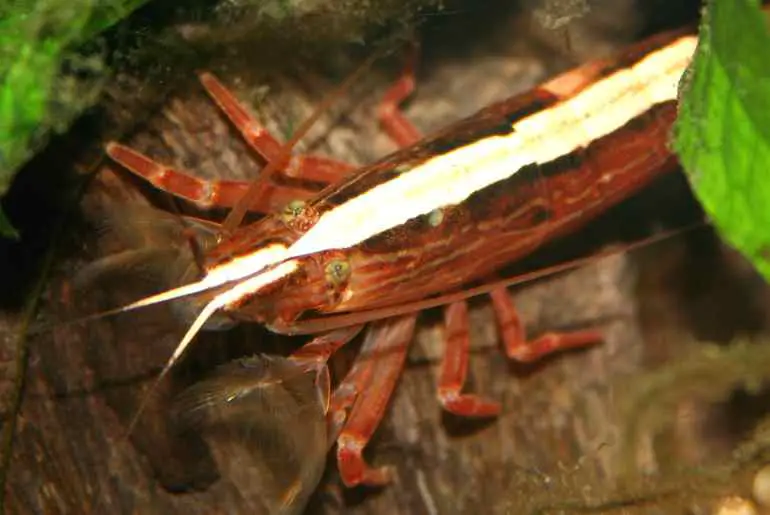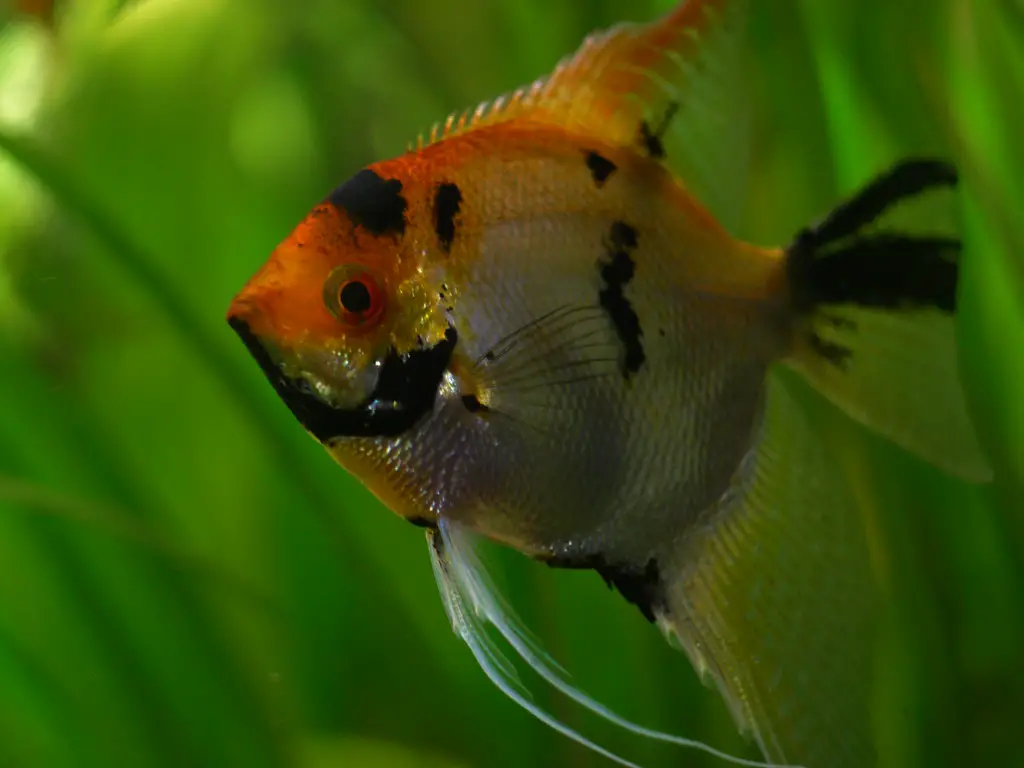There’s no doubt that keeping an aquarium in your house can be a fun and rewarding experience. But it can also be a lot of work! One important part of keeping your aquarium clean is making sure there’s not too much algae growth. That’s where algae eaters come in. If you can keep the best fish that can control algae in your tank, you’re well on your way to a healthy and happy aquarium. What are the Best Algae Eaters For Aquarium?
So, what are the best fish for algae control? The fish that are best for algae control are:
- Siamese algae eaters
- Chinese algae eaters
- Hillstream Loach
- Florida Flag Fish
- Octocinclus Catfish
Well, these are not the only algae eaters that can help you with keeping your aquarium clean but these are definitely the best ones. We will be exploring more algae eaters in this post and giving you tips on how to take care of them so that they can help you keep your aquarium clean and healthy. Stay tuned!
What Are Algae Eaters?
Algae eaters are fish that primarily feed on algae and phytoplankton. These fish play an important role in the ecosystem of both freshwater and saltwater aquariums.
Algae eater fish help to improve water quality by eating algae and keeping it from growing out of control. They are also primary consumers, which means that they relay the energy and biomass from plants up into the food web. In addition, algae eater fish protect the aquatic ecosystem against harmful algae blooms.
There are many different types of algae eaters, including both freshwater and saltwater species. Some common algae eaters include plecos, otocinclus catfish, Siamese flying foxes, and nerite snails. These fish come in a variety of shapes and sizes, which makes them suitable for a wide range of aquariums.
Things To Consider When You Choose The Best Algae Eaters For Your Aquarium
Choosing the best algae eaters for your aquarium can be a difficult task because there are so many different types of algae eaters and each one has its own unique set of requirements.
However, there are a few things that you should consider when you choose algae eaters for your aquarium.
Size Of Your Aquarium
The first thing you should consider is the size of your aquarium. If you have a small aquarium, then you will need to choose smaller algae eaters. However, if you have a large aquarium, then you can choose larger algae eaters.
Types Of Algae
The type of algae present in your aquarium will also dictate the type of algae eater that you should choose.
Some algae eaters are only capable of eating certain types of algae, so it is important to choose an algae eater that is able to eat the type of algae present in your aquarium.
Water Conditions
You should also consider the water conditions in your aquarium. Some algae eaters are only able to live in certain water conditions.
Therefore, it is important to choose an algae eater that can live in the water conditions that you have in your aquarium.
API 5-IN-1 TEST STRIPS Freshwater, and Saltwater Aquarium Test Strips 100-Count Box is easy to use and cheap to carry out. There are many strips in one which you can use for future too.
Algae Eater Compatibility
You should also look at the compatibility of the algae eater with other fish in your aquarium.
Some algae eaters are not compatible with other fish, so it is important to choose an algae eater that is compatible with the other fish in your aquarium.
By considering these factors, you will be able to choose the best algae eater for your aquarium.
How To Choose Best Algae Eaters For Your Freshwater Aquarium?
Being an enthusiastic aquarist, you certainly want the best for your tank. You want your fish to be healthy and happy, your water to be crystal clear, and your plants to grow lush and green.
But sometimes it feels like no matter what you do, algae just won’t stay away. If you can relate to this problem, then don’t worry. You are not alone. Many aquarium owners battle with algae on a daily basis.
So what can you do to get rid of algae? Well, one option is to choose the best algae eaters for your freshwater aquarium. Algae eaters are a great way to control algae growth and keep your tank looking its best.
But with so many different types of algae eaters to choose from, it can be tricky to know which one is right for your tank. So, here are a few things you need to keep in mind before choosing the best algae eaters for your aquarium:
Oxygenation Level
The oxygenation level in your aquarium plays a crucial role in the growth of algae. Algae thrive in low oxygen environments, so it’s important to make sure your aquarium is well aerated.
If you have a lot of algae in your tank, then you might need to invest in an air pump or air stone to increase the oxygen levels. While you choose your algae eater, make sure it is comfortable in high oxygen levels.
Presence Of Algae
Of course, you can’t have algae eaters if there are no algae present in your aquarium. So before you go out and buy an algae eater, take a good look at your tank and see how much algae is actually present.
If there’s only a small amount of algae, then you might be able to get away with just a couple of algae eaters. But if there’s a lot of algae, then you might need to consider adding more algae eaters to your tank.
Speed Of Water Current
The speed of the water current in your aquarium will also affect the growth of algae. Algae thrive in slow-moving water, so if your aquarium has a lot of currents, it might be difficult for algae to grow.
When choosing algae eaters, make sure to choose ones that are comfortable in high currents. This will help to keep the algae population under control and make it easier for your algae eaters to do their job.
Density Of Hardscape
The density of the hardscape in your aquarium can also affect the growth of algae. If there’s not enough hardscape, algae can easily take over and start to smother your plants.
To prevent this from happening, make sure to choose algae eaters that are comfortable in dense environments. This will help to keep the algae population under control and give your plants a fighting chance.
Temperament Of Other Tank Mates
Finally, you need to consider the temperament of your other tank mates when choosing algae eaters. Some algae eaters can be quite aggressive and might not do well with peaceful fish.
So, before you choose an algae eater, make sure to research its temperament and make sure it will be compatible with your other fish.
By keeping these things in mind, you will be able to choose the best algae eaters for your freshwater aquarium and keep your tank looking its best.
I am sure you can know how to choose. Now, let’s know about the algae eaters best for a freshwater aquarium!
Best Algae Eaters Fish For Freshwater Aquarium
Each place has its own unique ecology. The same goes for your freshwater aquarium! In order to have a healthy and balanced aquarium, you need to choose the best algae eaters that will fit in with your specific setup. Here are some of the best algae eaters for a freshwater aquarium:
Siamese Algae Eaters
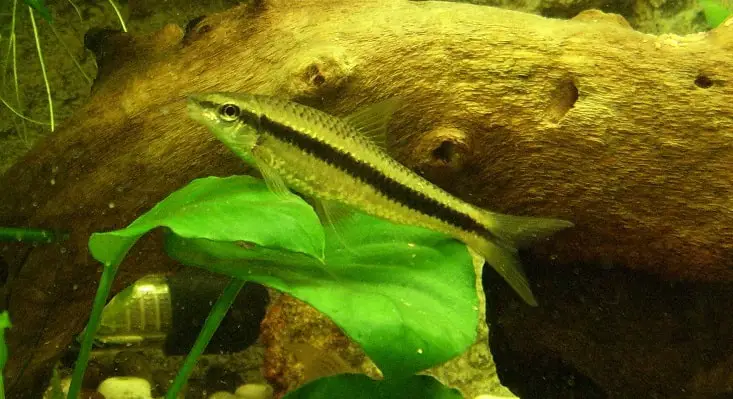
The Siamese Algae Eater originates from Southeast Asia and can be found in Thailand, Laos, Cambodia, and Vietnam. In the wild, they typically inhabit shallow, slow-moving rivers and streams with plenty of vegetation. These fish are brown or black in color, with a light stripe running down their middle. They have a long, slender body that can grow up to 6 inches in length.
The Siamese Algae Eater is a popular choice for aquariums because it is such an effective algae eater. This fish will consume all types of algae, including the tough-to-remove green spot algae. They are peaceful fish that do well with other tank mates.
When choosing a Siamese Algae Eater for your aquarium, it is important to purchase one that is captive bred as wild-caught specimens often do not do well in captivity. These fish require clean water with moderate filtration and plenty of hiding places. An ideal pH range for Siamese Algae Eaters is 6.5-7.5, and the water should be on the harder side.
Overall, the Siamese Algae Eater is a great choice for those looking for an effective algae eater that is also low maintenance.
Chinese Algae Eaters
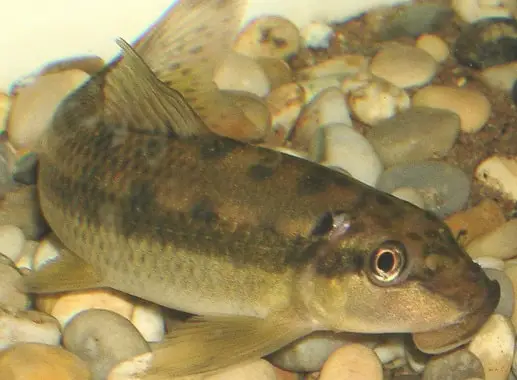
The Chinese Algae Eater originates from fresh waters in Southeast Asia. In the wild, they can be found in rivers, streams, lakes, and ponds with plenty of vegetation. They are schooling fish, so they should be kept in groups of at least 6 in an aquarium.
The Chinese Algae Eater is a unique-looking fish that is dark brown or black on top and light grey on the bottom. They have a long, slim body and barbels near their mouth, which they use to search for food. They can grow up to 10 inches long but are typically only about 6 inches in an aquarium.
These fish gravitate towards the bottom of the tank, where they spend most of their time eating algae off of rocks and plants. They are known as one of the best algae eaters, which is why many people choose to add them to their tanks. They do best in freshwater tanks with a pH between 6.5 and 7.5 and temperatures between 72-86 degrees Fahrenheit.
When adding them to your tank, it’s important to make sure the Chinese are compatible with your other fish. Some good tankmates include Danios, Tetras, Mollies, Platies, Barbs, and Dwarf Gouramis. With proper care, these fish can live for over ten years with you.
Otocinclus Catfish
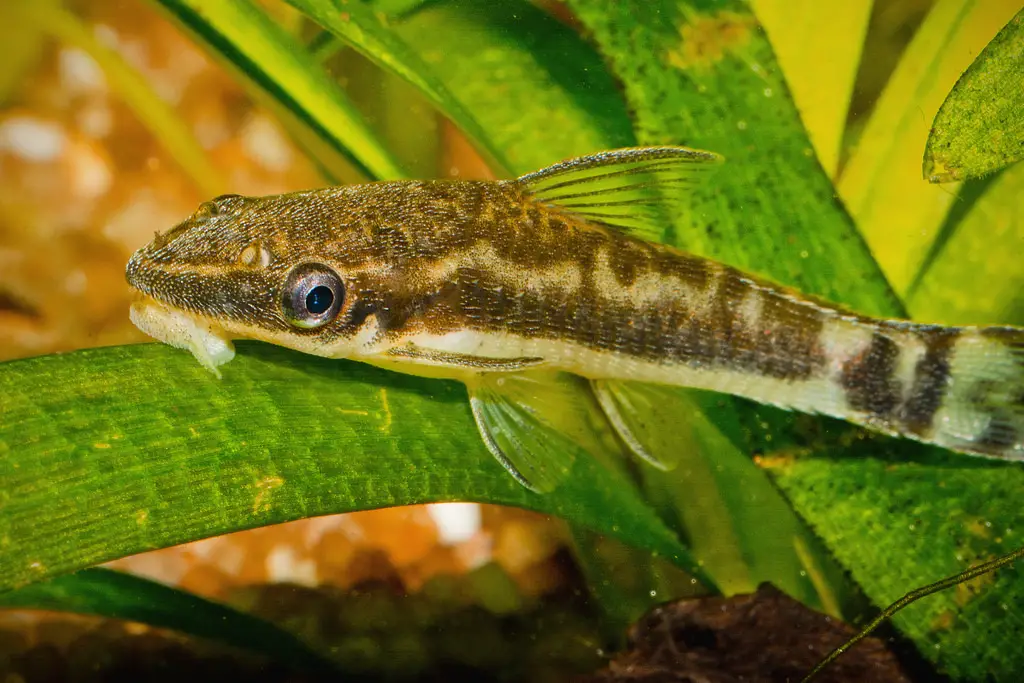
Otocinclus Catfish, also known as Oto cats, are small freshwater fish that originates from South America. They are brown or black in color and have a white or silver belly. They have armored plated heads and barbels around their mouths, which they use to scavenge for food. Otocinclus Catfish grow to be about 2 inches in length and prefer to live in groups. They are peaceful fish that get along well with other tank mates.
Otocinslu Catfish have a lifespan of 2-3 years with proper care. They prefer water that is clean and well-oxygenated with a neutral pH level. A lot of vegetation in the aquarium is also beneficial as it provides both food and hiding places for the fish.
Otocinclus Catfish are best known for their ability to help control algae in an aquarium. They will eat both soft and hard algae off of glass, plants, and decorations. Otos are especially helpful in controlling black beard algae. While they will consume algae, they are not a replacement for a proper cleaning regime and should be used in addition to other methods of controlling algae.
Bristlenose Plecostomus

Bristlenose Plecostomus originates from the rivers of South America. They are brown or olive in color and have bushy plecos on their heads. When fully grown, they can reach up to 6 inches in length.
Bristlenose Plecostomus is a peaceful bottom-dweller that does well with other fish of similar size and temperament. They are gentle algae eaters and do not bother other tankmates. Bristlenose Plecostomus lifespan is around ten years but may live longer with proper care. Ideal water conditions for them are a temperature between 72-82 degrees Fahrenheit, a neutral pH between 6.8-7.6, and medium hardness.
Why is it best for algae control? Bristlenose Plecostomus has a small mouth designed for eating algae off of plants and rocks in the wild. In the home aquarium, they will help keep the algae under control while not damaging the plants like some other fish might. All in all, Bristlenose Plecostomus makes a great addition to any peaceful community aquarium!
Whiptail Catfish
Whiptail Catfish are native to the calm waters of South America, specifically Brazil, Argentina, and Uruguay. In their natural habitat, these fish can be found in slow-moving rivers and streams with plenty of soft vegetation for them to hide in. Their coloration ranges from light brown to black, and they have a long, slender body with a small head. Whiptail Catfish grow to be about 4-5 inches in length, making them a good choice for smaller aquariums.
One reason why Whiptail Catfish are so popular is that they are great at controlling algae growth. These fish love to eat algae, and they will help to keep your tank clean and free of unwanted plants. In addition, Whiptail Catfish are peaceful and typically get along well with other tank mates. They are also relatively hardy fish and can tolerate a wide range of water conditions. As long as you provide them with a peaceful environment and plenty of vegetation to hide in, Whiptail Catfish will thrive in your aquarium.
Florida Flag Fish
The Florida Flag Fish originates from, you guessed it, Florida! More specifically, they can be found in the marshes and swampy areas of the southeastern United States. These fish are very adaptable and can survive in a wide range of water conditions.
Flag Fish get their name from their striking appearance. They are pale blue with yellow stripes running horizontally along their bodies. Males tend to be more brightly colored than females. These fish are relatively small, reaching a maximum size of about 2.5 inches.
Florida Flag Fish are excellent algae eaters and are often used in aquariums to control algae growth. They will also consume mosquito larvae and other small insects. These fish are peaceful and can be kept with a variety of tankmates.
Flag Fish are typically easy to care for and have a lifespan of 2-3 years with proper care. They prefer water that is clean and well-oxygenated. A purchase of these little guys can brighten up your aquarium while helping to keep it clean!
Twig Catfish
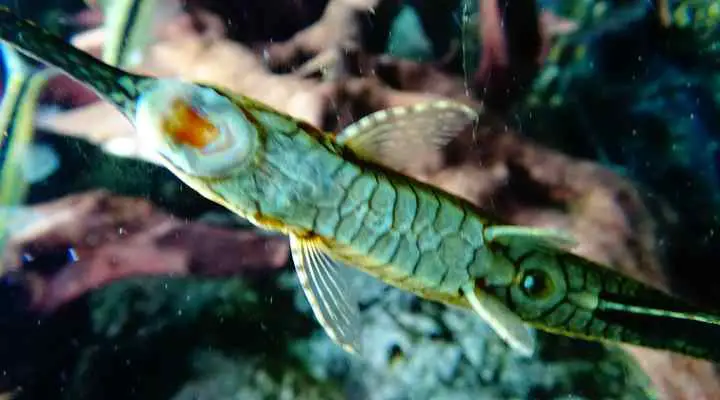
The Twig Catfish originates from the Amazon Basin in South America. It gets its name from its long, slender body that resembles a twig. The Twig Catfish is a peaceful fish that is brown or tan in color with black bands running vertically down its body. It is a nocturnal fish that prefers to live in groups and typically grows to be about 6 inches long.
The Twig Catfish is an excellent choice for algae control because it is a scavenger that will happily eat algae, dead plants, and uneaten food. It is also a good idea to keep Twig Catfish in groups of at least 3 since they are social creatures that prefer to live in close proximity to other fish. When it comes to water conditions, the Twig Catfish is relatively easy to care for and can live in a wide range of temperatures and pH levels.
However, it is important to provide them with plenty of hiding places since they are shy fish that like to have a place to retreat when they feel stressed. With proper care, the Twig Catfish can live for 5-10 years in captivity.
Hillstream Loach

The Hillstream loach originates from fast-moving rivers in Asia. They are a member of the loach family and are sometimes called Botiine loaches. Hillstream loaches have an elongated body that is flattened from side to side. They have a wide mouth with tiny barbels near the corners. Depending on the species, Hillstream loaches can grow to be 2-6 inches long.
Hillstream loaches are unique in their ability to thrive in both cold and warm water conditions. In their natural habitat, they often inhabit rapids and waterfalls where the water flow is very strong. As a result, they are highly adaptable and can live in a wide range of temperatures, from 65-85 degrees Fahrenheit.
Hillstream loaches are also known for their voracious appetite for algae. They will pick algae off of rocks and plants in the aquarium, making them an excellent choice for those looking for a natural way to control algae growth. Furthermore, Hillstream loaches are peaceful fish that get along well with other tank mates.
These are the best algae eater fish that you can keep in your aquarium. However, not only fish, snails and shrimps are also famous for algae control too. Do you know what are the algae eating snails?
Best Algae Eaters Snails For Freshwater Aquarium
If you have an aquarium, then you know that algae can be a real problem. Algae can quickly take over your tank and make it look unsightly. But there is hope! There are many different types of algae eaters that can help keep your aquarium clean and looking great.
As you come here, we have already discussed a few of the best algae eater fish above. Besides fish, there are also some snails that make great algae eaters. They are:
Malaysian Trumpet Snail

The Malaysian Trumpet snail originates from Southeast Asia, where it is found in slow-moving freshwater streams and rivers. It is a popular addition to aquariums because of its ability to control algae growth. The snail is olive green in color and has a long, conical shell. It grows to be about 2 inches long and is an active swimmer.
One of the reasons the Malaysian Trumpet snail is so effective at controlling algae growth is that it is a voracious eater. The snail will consume all types of algae, including hair algae, green algae, and blue-green algae. In addition, the snail helps to aerate the substrate and keeps the tank clean. Malaysian Trumpet snails are also relatively easy to care for and have a lifespan of 2-3 years.
The only thing you need to take care of when you keep Malaysian Trumpet snails is that they require an aquarium with a sandy substrate and moderate lighting. And their tankmates should be peaceful and of similar size.
Ramshorn Snail
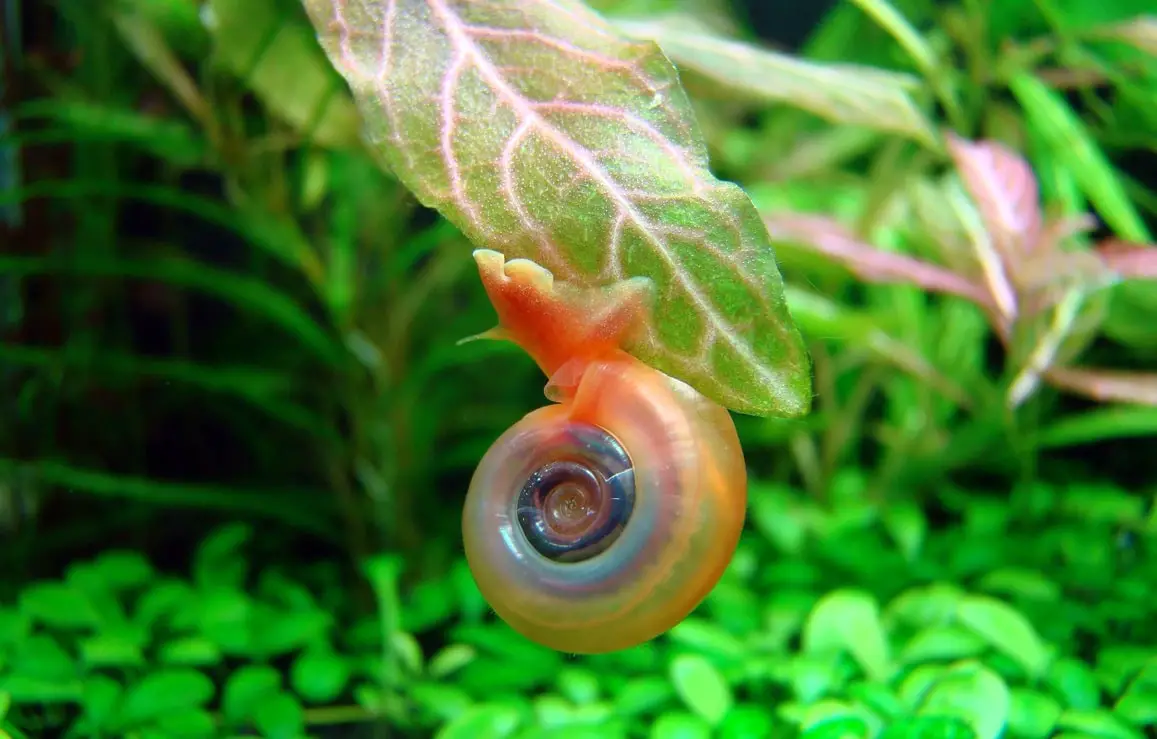
Ramshorn snails are a type of freshwater snail that is found in a variety of habitats all over the world. They get their name from their distinctive spiral-shaped shell, which is often red, brown, or black in color. Ramshorn snails range in size from less than one inch to several inches in diameter, and they can live for 2-3 years in captivity.
While they are often kept as pets, ramshorn snails are also very effective at controlling algae growth in aquariums. This is because they are scavengers that will happily eat any algae they come across. As a result, they can help to keep an aquarium clean and free of unwanted debris. Ramshorn snails are peaceful creatures that get along well with most other tank mates.
However, they can sometimes be reproduced quickly and become a nuisance if their population is not kept in check. Overall, ramshorn snails make great additions to both freshwater and saltwater aquariums alike.
Mystery Apple Snail

The Mystery Apple Snail is a freshwater snail that originates from South America. It is also known as the Golden Mystery Snail, the Ivory Mystery Snail, and the Inca Mystery Snail. These snails have become very popular in the aquarium trade due to their unique appearance and algae-eating abilities.
Mystery Apple Snails are known for their large size, with some specimens reaching up to 6 inches in length. They have a round shell that is yellow, gold, or ivory in color with brown spots. The shell is slightly translucent, which gives these snails a very striking appearance.
One of the reasons that Mystery Apple Snails are so popular is because they are excellent algae-eaters. They will happily consume all kinds of algae, including the tough to remove algae known as beard algae. In addition to eating algae, Mystery Apple Snails also consume dead plant matter and fish waste. This makes them an ideal addition to any aquarium cleanup crew.
Mystery Apple Snails are relatively easy to care for, but there are a few things to keep in mind. These snails are very sensitive to changes in water quality, so it is important to maintain stable water conditions.
Rabbit Snail
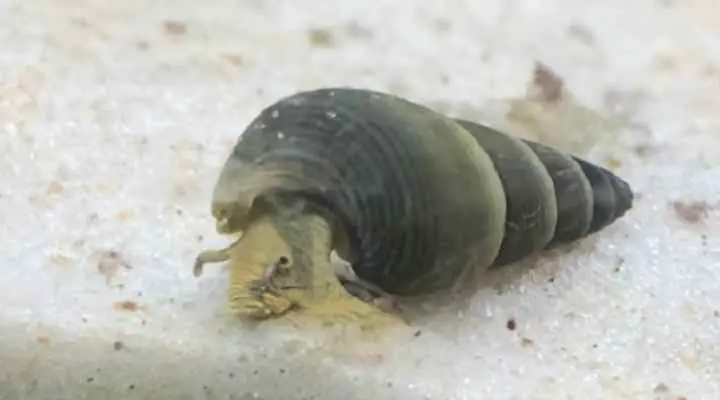
Rabbit snails are a type of snail that originates from Southeast Asia. They are commonly found in fresh and brackish water habitats. Rabbit snails are distinguished by their long, cone-shaped shells. They can grow to be quite large, with some specimens reaching up to 6 inches in length.
Rabbit snails are prized by aquarium enthusiasts for their algae-eating habits. They are particularly effective at controlling cyanobacteria, which is often difficult to remove from tanks. In addition, rabbit snails are relatively peaceful and can make good tankmates for other fish and invertebrates.
Rabbit snails have a lifespan of 2-3 years, but they can live up to 5 years with proper care. They prefer water that is slightly acidic or neutral, with a temperature range of 70-80 degrees Fahrenheit. Given the right conditions, rabbit snails can make an excellent addition to any aquarium.
Nerite Snail

Nerite Snails are a type of freshwater snail that originates from brackish water habitats in Southeast Asia. They are one of the most popular types of snail for aquariums because of their relatively small size, interesting appearance, and helpful algae-eating habits. Nerite Snails are black or dark brown in coloration and have a distinctive zig-zag pattern on their shells. They grow to be about 1/2 inch in size and are peaceful tankmates that get along well with other fish and invertebrates.
One of the reasons Nerite Snails are so popular is because they are great at controlling algae growth in an aquarium. They will graze on algae growing on the glass, plants, and decorations in the tank, helping to keep things looking clean and tidy. Nerite Snails are also very good at eating detritus (uneaten food and waste), which helps to keep the water quality high and reduces the risk of ammonia spikes.
If you’re looking for a low-maintenance addition to your aquarium that can help with algae control, Nerite Snails are an excellent choice! Just be sure to provide them with plenty of rocks, driftwood, and live plants to
Mystery Snail
Mystery snails are a type of freshwater snail that originates from Southeast Asia. In the wild, they can be found in slow-moving rivers and ponds with muddy bottoms. Mystery snails are typically about two inches long and have a dark brown or black shell. They are best known for their ability to control algae growth in aquariums. This is because mystery snails are herbivores and prefer to eat algae over other plants.
Mystery snails can live for two to three years, provided they have ideal water conditions. These conditions include clean water with a neutral pH level and a temperature between 70 and 80 degrees Fahrenheit. Mystery snails also do well in tanks with other peaceful fish, such as guppies and mollies.
Best Algae Eaters Shrimps For Freshwater Aquarium
Sometimes aquarists search for effective algae eaters for their aquarium besides fish. In addition to the algae-eating fish, there are also other animals that do a great job of consuming algae. These are the best algae eaters snails and shrimps for your freshwater aquarium.
We have discussed the snails above and now is the time to look at the best algae eaters shrimps.
Amano Shrimp
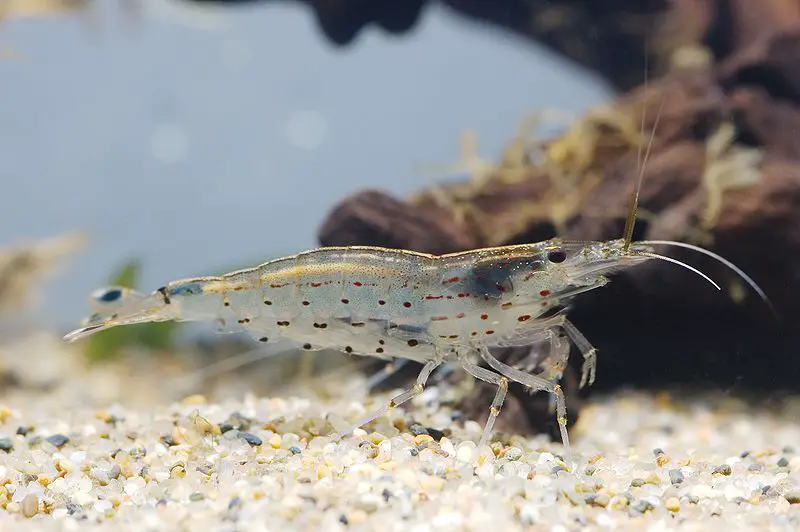
Amano shrimp are native to rivers and streams in Southeast Asia. In the wild, they prefer habitats with plenty of plants and algae for grazing. Amano shrimp are easily recognized by their transparent bodies and brownish-grey coloration. They grow to be about 2 inches in length.
Amano shrimp are a popular choice for algae control in aquariums because they are voracious eaters. They will graze on all kinds of algae, including pesky types that are difficult to remove.
Amano shrimp are relatively peaceful and can be kept with a variety of tankmates. They do best in aquariums with stable water parameters. Ideal conditions include a pH of 7.0-8.0, a water hardness of 5-20 dGH, and a temperature of 72-78 degrees Fahrenheit. With proper care, Amano shrimp can live for 2-3 years in captivity.
Ghost Shrimp
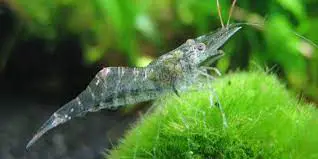
Ghost shrimp are popular in both freshwater and saltwater aquariums. They origin from slow-moving streams and rivers in Asia, and are a peaceful community of tankmates. In the wild, they live amongst plants and debris and prefer habitats with little to no currents.
Ghost shrimp are see-through and have a long, slender body. They grow to be about 1.5 inches long, and their transparent bodies make them very difficult to spot in an aquarium. However, their Rio Grande coloration (red on their dorsal tail fan) is quite striking. While they are peaceful by nature, ghost shrimp can be territorial with each other when it comes to food. They are also known to be jumpers, so it’s important to have a tightly fitting lid on your aquarium.
One of the reasons ghost shrimp are so popular is because they are excellent cleaners. They will scavenge for uneaten food and algae, helping to keep your aquarium clean. They are also very easy to care for and can tolerate a wide range of water conditions. Ghost shrimp typically live for about 12 months, but can live longer under ideal conditions.
Bamboo Shimp
Bamboo shrimp (Atyopsis spinipes) is a popular freshwater aquarium species that originates from Southeast Asia. These creatures are famous for their unique appearance, as they have long, slender bodies and legs covered in bright red and white stripes. Bamboo shrimp typically reach a length of 2-3 inches, making them a great addition to any size tank.
One of the reasons why bamboo shrimp are so popular is because they are excellent algae eaters. These shrimp are constantly on the move, sifting through the substrate in search of food. As they do so, they help to keep the tank clean and free of excess algae growth. Bamboo shrimp are also peaceful tankmates that can be kept with a wide variety of other fish species.
If you’re looking for an interesting and low-maintenance addition to your freshwater aquarium, bamboo shrimp may be the perfect choice for you!
Cherry Shrimp
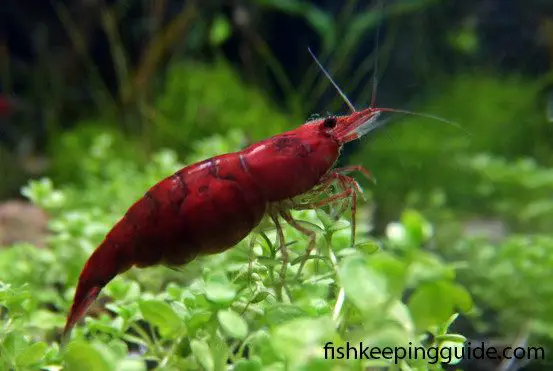
Cherry Shrimp are one of the most popular species of freshwater aquarium shrimp. They are native to Taiwan and can live in a variety of habitats, from slow-moving streams to stagnant ponds.
You can simply distinguish Cherry Shrimp by their bright red coloration, which can range from a deep crimson to light pink. They are typically between 1 and 2 inches in length. In the wild, Cherry Shrimp feed on algae and detritus. This makes them an ideal choice for aquariums, as they will help to keep the tank clean and free of algae.
Cherry Shrimp are relatively easy to care for and can live for up to 2 years in captivity. They prefer water that is soft and slightly acidic, with a temperature between 70 and 80 degrees Fahrenheit. When choosing tankmates for Cherry Shrimp, it is best to choose peaceful fish that will not view them as food. Some good options include guppies, neon tetras, and rasboras.
However, there are many other options that you can opt for to get rid of algae. Are you familiar with all of them?
Other Ways To Get Rid Of Algae In The Tank
While some aquarists enjoy keeping different animals in their aquarium, others might not be too keen on the idea of adding more creatures to their space. If you’re in the latter group, there are still a few things you can do to combat algae:
Change The Lighting
One of the reasons algae thrives is because it’s able to photosynthesize and produce its own food. By changing your aquarium lighting, you can make it less hospitable for algae. This means either getting a new light that emits different wavelengths of light or simply turning the current light off for a few hours each day.
Add More Plants
Another way to out-compete algae is by adding more plants to the aquarium. Not only do plants help to oxygenate the water, but they also absorb many of the nutrients that algae need to survive. This gives algae less of a chance to grow and spread throughout the tank.
Increase The Flow
You can also get rid of algae by making it harder for algae to take hold by increasing the flow in the aquarium. Algae prefers still or slow-moving water, so by adding a powerhead or filter with a stronger flow, you can make it more difficult for algae to establish itself.
The following filters can also help you increase the flow in your tank:
- Hydro Professional External Canister Filter
- Eheim Classic External Canister Filter
- Aqua Clear Power Filter IIO
- Fluval FX6 Canister Filter
Clean The Tank Regularly
Finally, one of the best ways to prevent algae is simply to keep the tank clean. This means doing things like vacuuming the gravel and wiping down the glass on a regular basis. By removing algae before it has a chance to take hold, you can keep it from becoming a problem in the first place.
If you’re struggling with algae growth in your tank, try out one of these techniques and see if it makes a difference.
Can You Get Rid Of Algae Present In The Tank Naturally?
It might seem absurd but you can even get rid of algae in the tank by making use of other algae. Seaweed and algae are natural enemies and if you place some in the fish tank, it will help to get rid of the algae present there.
Usually, the natural method to get rid of algae is to let it grow and then harvest it. This can be done by letting the water become murky and then using a net to remove the algae from the top. After this, you should clean the tank and get rid of the debris.
This is a great method to get rid of algae, but it can be time-consuming. If you have the patience, then this is the best way to go about it. You will need to clean the tank regularly and make sure that there is no debris left behind.
Conclusion
In conclusion, if you are looking for the best algae eaters for your aquarium, there are many different types of fish, snails shrimp that can do the job. It really depends on what type of aquarium you have and what kind of budget you are working with. Some of the best algae eaters are actually very inexpensive, so do your research and find the perfect one for your needs!
I hope this article was helpful in finding the best algae eater for your aquarium. If you have any questions or comments, please feel free to leave them below and I will get back to you as soon as possible.
Thanks for reading!

